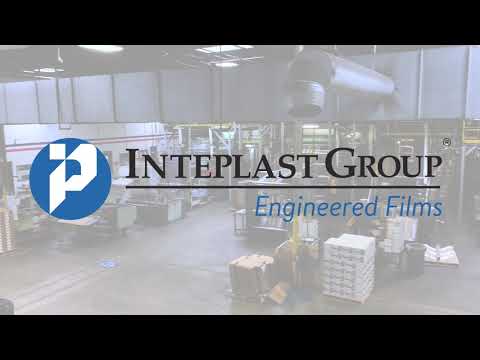
With more than 80 million tonnes manufactured each year, polyethylene (PE) has claimed the title of world’s most important plastic. The material is used in a large number of applications, including plastic bottles, bags, toys, and films. PE is the material of choice in a variety of products due to its unique chemical properties which allow it to be strong and highly durable while remaining flexible. Polyethylene products are also easily recyclable via plastic recycling streams, and its resins can be re-used and re-purposed several times over.
There are several types of polyethylene, each with their own unique properties and ideal set of applications. Belonging to the polyolefin family of polymers, PE is classified by its density and branching. In today’s Plastics 101 we’ll be taking a closer look at the different types of PE, so that you can better understand how IEF manufactures and engineers our plastic films. You might want to dust off your old chemistry textbook.
Low Density Polyethylene (LDPE)
Low density polyethylene, or LDPE, is characterized by highly branched chains with random, long branching. LDPE has a density ranging from .910 to .935 grams per cubic centimeter (g/cc).
When it comes to its use in plastic films, LDPE resins provide acceptable toughness, flexibility, optics, and permeability. While not as strong as LLDPE resins, LDPE provides excellent shrink properties. For an overview on the blown film process and the role of plastic resins in the process, check out our previous edition of Plastics 101.
Common applications of low density polyethylene resins are liners, shrink bundling, and films that require high clarity.
Linear Low Density Polyethylene (LLDPE)
Linear low density polyethylene (LLDPE) is characterized by short, random chain branching, with a density of .915 to .930 g/cc.
When compared to LDPE, LLDPE has much better tensile, impact, and tear strength, as well as greater seal strength. It can be more difficult to process when compared to LDPE, but many blends combine the two to improve stability and optics.
Applications for LLDPE include sealant films, stretch films, liquid packaging, and agricultural bags.
Ultra Low Density Polyethylene (ULDPE)
Ultra low density polyethylene (ULDPE) resins are actually LLDPE resins with a density less than .915 g/cc. ULDPE provides superior tear, impact, and seal strength when compared to higher density LLDPE.
Applications of ULDPE include heavy duty films, food packaging, and stretch hooder.
Metallocene Polyethylene (mPE or mLLDPE)
Metallocene polyethylene, also known as mPE or mLLDPE, is a single site catalyzed LLDPE, which results in a more uniform material. mPE typically has a very even chain branching. Its density ranges from .870 to .965 g/cc.
As with other lower density materials, mPE tends to have excellent hot tack and seal strength, as well as improved flex crack resistance. Its physical properties are typically superior to standard LLDPE of similar density.
Applications of metallocene polyethylene include sealant films, form/fill/seal films, liquid packaging, and produce films.
High Density Polyethylene (HDPE)
Last but not least, high density polyethylene (HDPE) is polyethylene with a density greater than .940 g/cc.
HDPE has high stiffness when compared to LDPE and LLDPE, and provides excellent moisture and oxygen barriers. HDPE has good chemical resistance (oils, detergents, etc.), and is highly resistant to blocking. High density polyethylene is often used in LLDPE blends/coextrusions to improve the overall blend’s stiffness and barrier properties.
Applications include HD films, form/fill/seal films, cereal liners, and oil barriers.
This is only the tip of the iceberg when it comes to the technical knowledge that goes into engineering our films. We know it can feel overwhelming, but don’t worry. Our technical experts are ready to answer any questions you may have. Reach out today to see how IEF can engineer a perfect solution for your packaging needs.
To stay up to date with the latest news and blog posts from IEF, connect with us on LinkedIn and subscribe to our monthly newsletter!
Published March 2021



